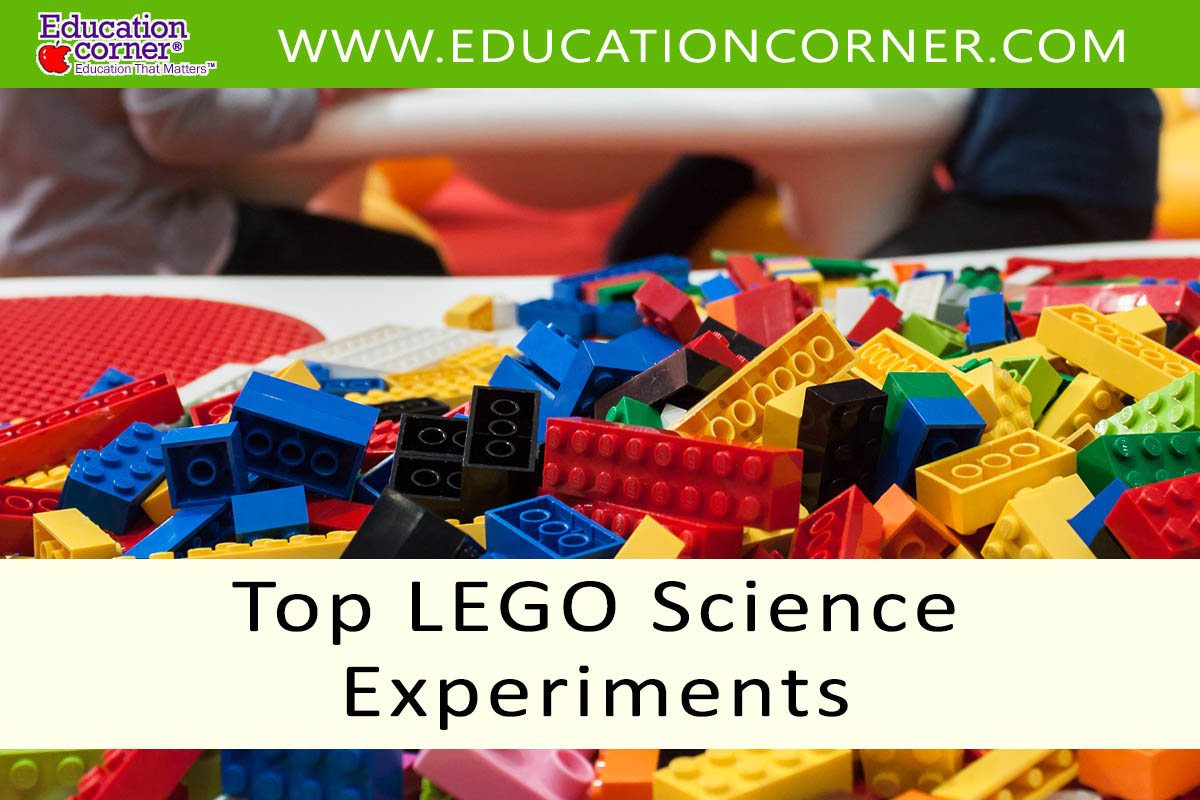Whether you’re a seasoned LEGO enthusiast or just getting started with brick-building, we have something for you that will ignite your imagination and inspire you to think outside the blocks.
LEGO offers more than just an avenue for creative play. With their standardized sizes, varied shapes, and endless possibilities for construction, LEGO sets serve as an excellent tool for making complex scientific principles tangible and fun.
These hands-on, educational experiments promise to enhance your scientific understanding while tapping into the joys of creative play.
1. LEGO Excavation
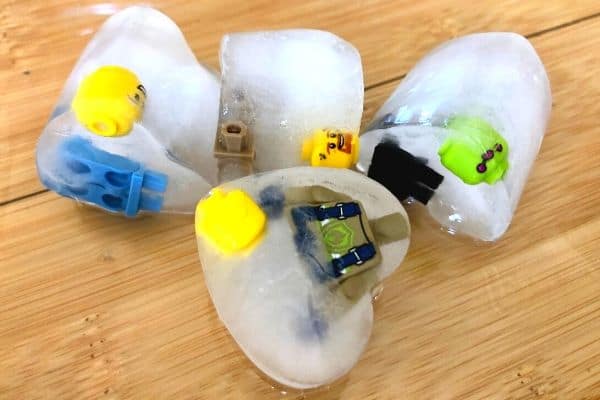
LEGO Excavation combines the joy of building with the thrill of uncovering hidden treasures, fostering critical thinking skills and igniting a passion for discovery. Let’s explore why students should embark on this educational adventure!
Learn more: Lego Excavation
2. Building LEGO Water Dams
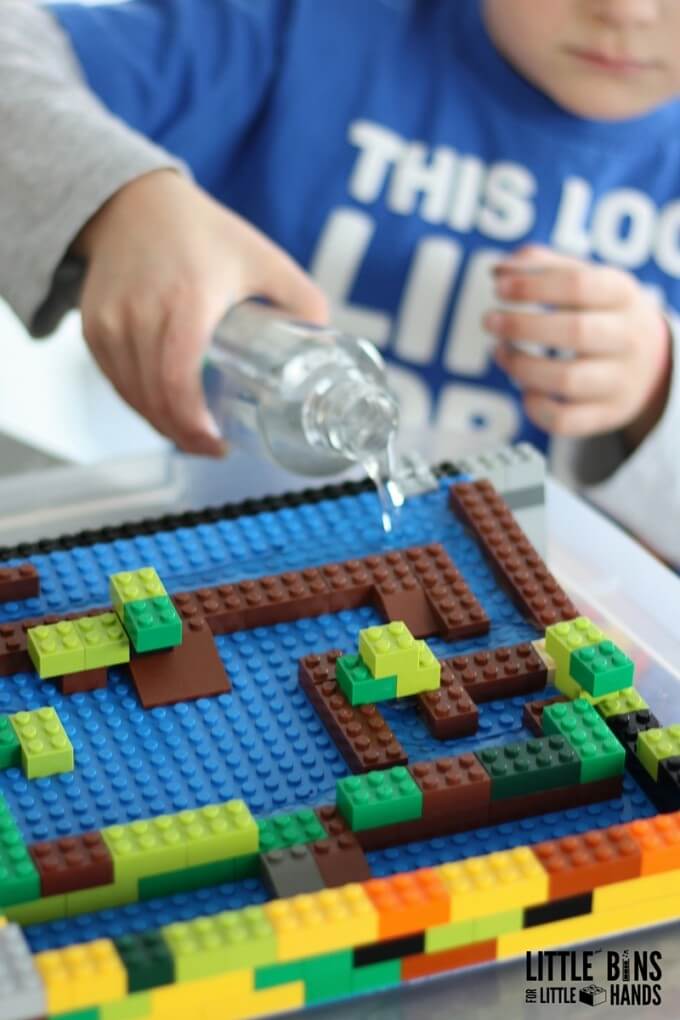
Through hands-on building and experimentation, they gain a deeper understanding of how these factors affect the functionality and efficiency of real-world water dams.
Learn more: Building Lego Water Dams
3. LEGO Zipline
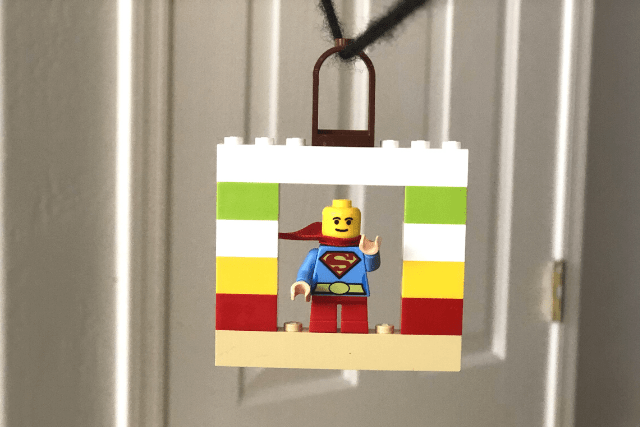
By constructing their own LEGO zipline, students can explore concepts such as gravity, friction, and momentum in a hands-on and engaging way.
Learn More: Lego Zipline
4. LEGO Balance Scale
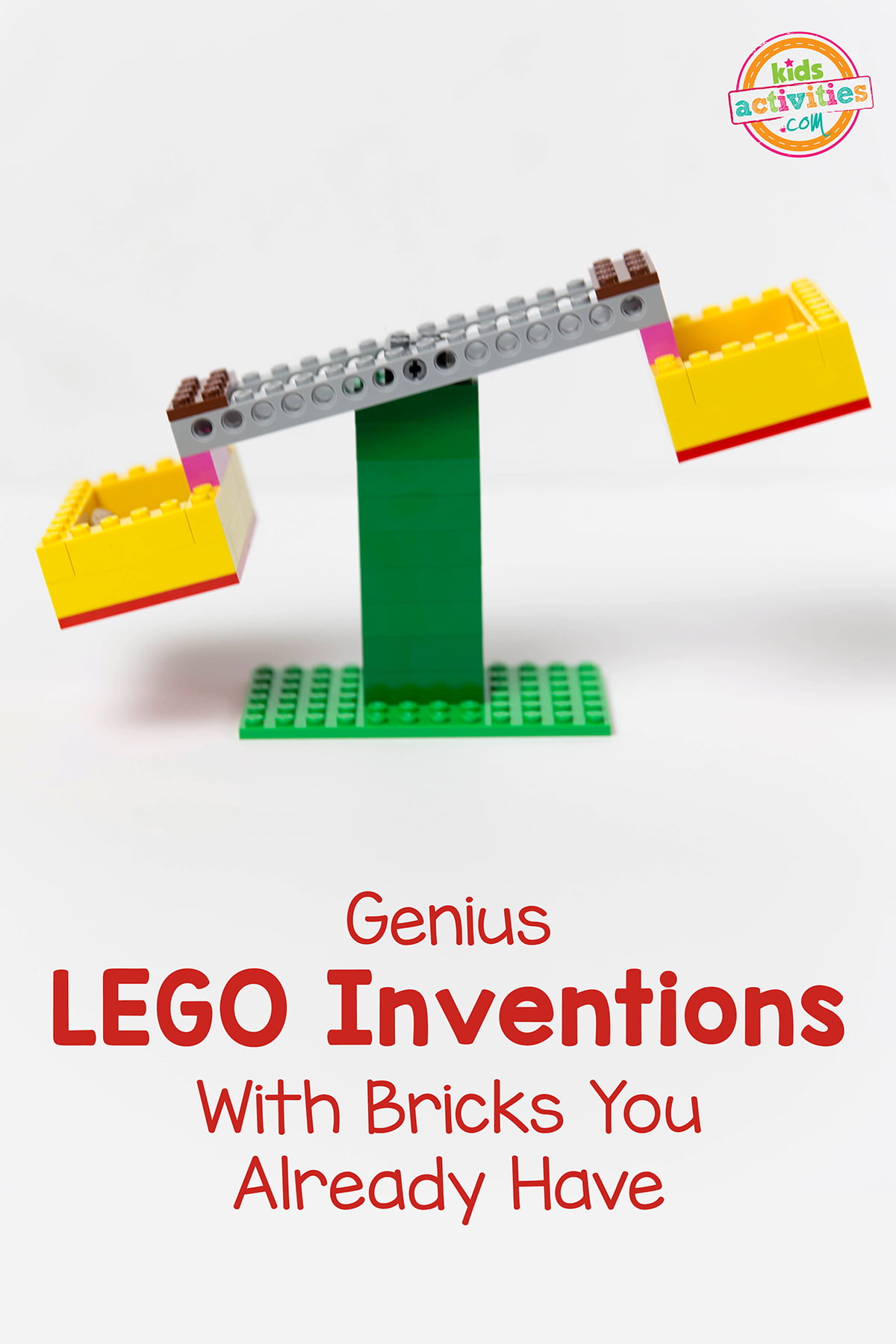
By constructing their own LEGO balance scale, students can investigate concepts such as weight, mass, and the equilibrium of forces.
This experiment promotes critical thinking and problem-solving skills as students calibrate and adjust their balance scale to ensure accurate measurements.
Learn more: Lego Balance Scale
5. LEGO Spinning Tops
By constructing their own LEGO spinning tops, students can explore principles such as rotational motion, center of mass, and angular momentum in a hands-on and engaging way.
6. LEGO Magnet Maze
The LEGO Magnet Maze experiment is an exciting and educational activity that allows students to explore the principles of magnetism and problem-solving.
By creating their own magnet maze using LEGO bricks and magnets, students can investigate the behavior of magnetic fields and their interactions.
7. Balloon Powered Car
By constructing their own LEGO car powered by a balloon, students can explore concepts such as Newton’s third law of motion and the transfer of energy.
8. LEGO LED Flashlight
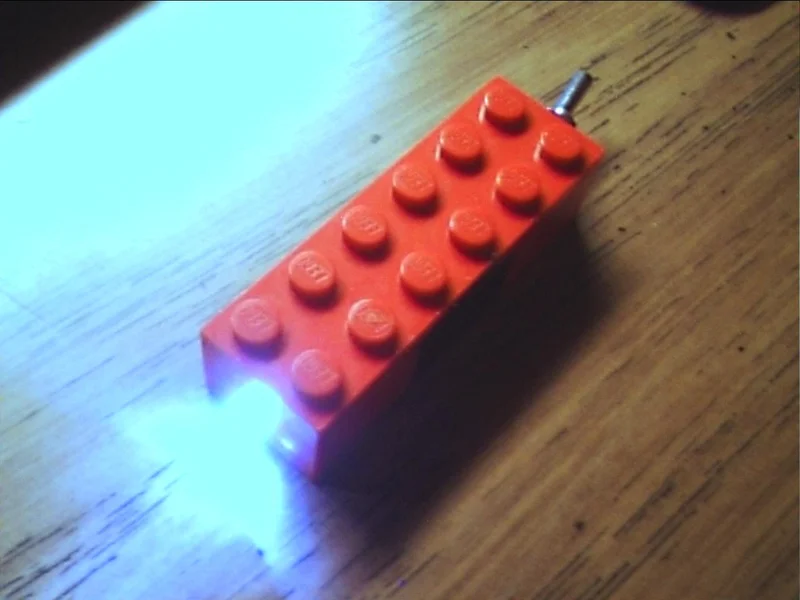
Students are able to improve their fine motor skills, foster an enthusiasm of analysis and creativity, and obtain a practical understanding of fundamental electronics by participating in the LEGO LED Flashlight experiment.
Learn more: Lego LED Flashlight
9. LEGO Pendulum
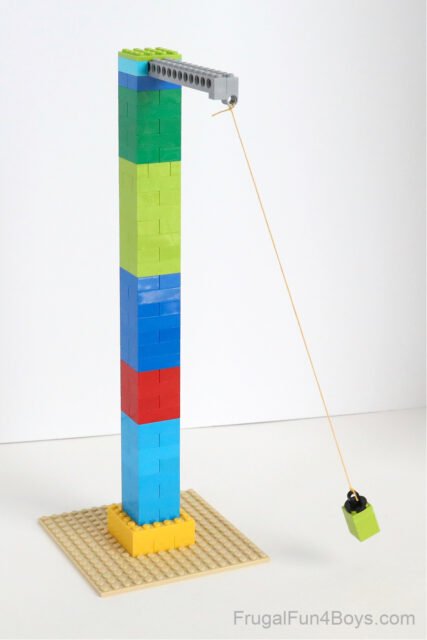
The LEGO Pendulum experiment is a captivating and educational activity that introduces students to concepts of physics, motion, and experimentation.
By constructing their own LEGO pendulum, students can explore principles such as gravity, potential energy, and the behavior of pendulums.
Learn more: Lego Pendulum
10. Sink and Float LEGO Man!
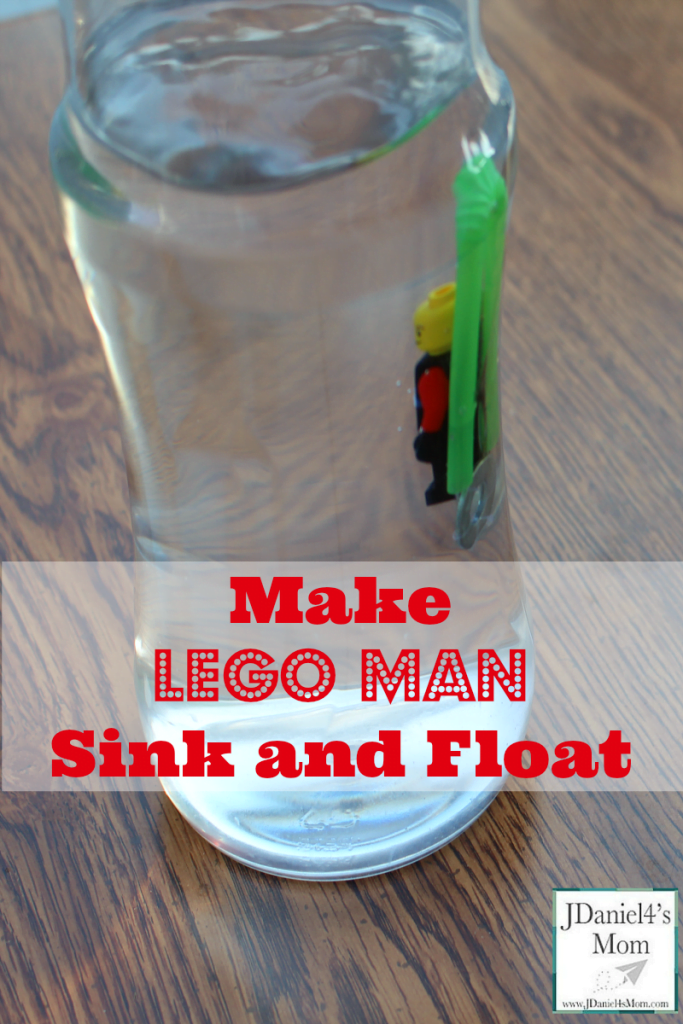
The LEGO Sink and Float experiment is a fascinating and educational activity that allows students to explore principles of buoyancy, density, and experimentation.
Learn more: Make a Lego Man Sink and Float
11. LEGO Volcano
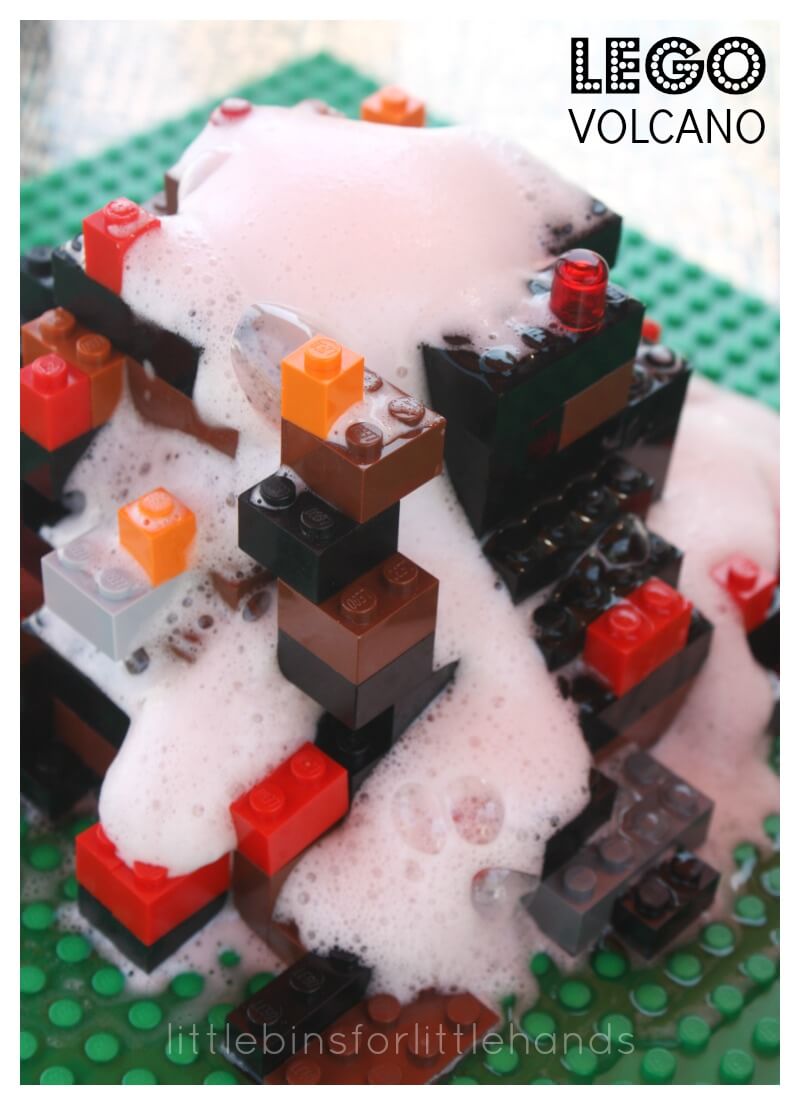
The LEGO Volcano experiment using baking soda is an exciting and educational activity that combines creativity and chemistry.
By constructing their own LEGO volcano and using baking soda and vinegar, students can simulate a volcanic eruption right before their eyes.
Learn more: Build A Lego Volcano
12. LEGO Soil Layers
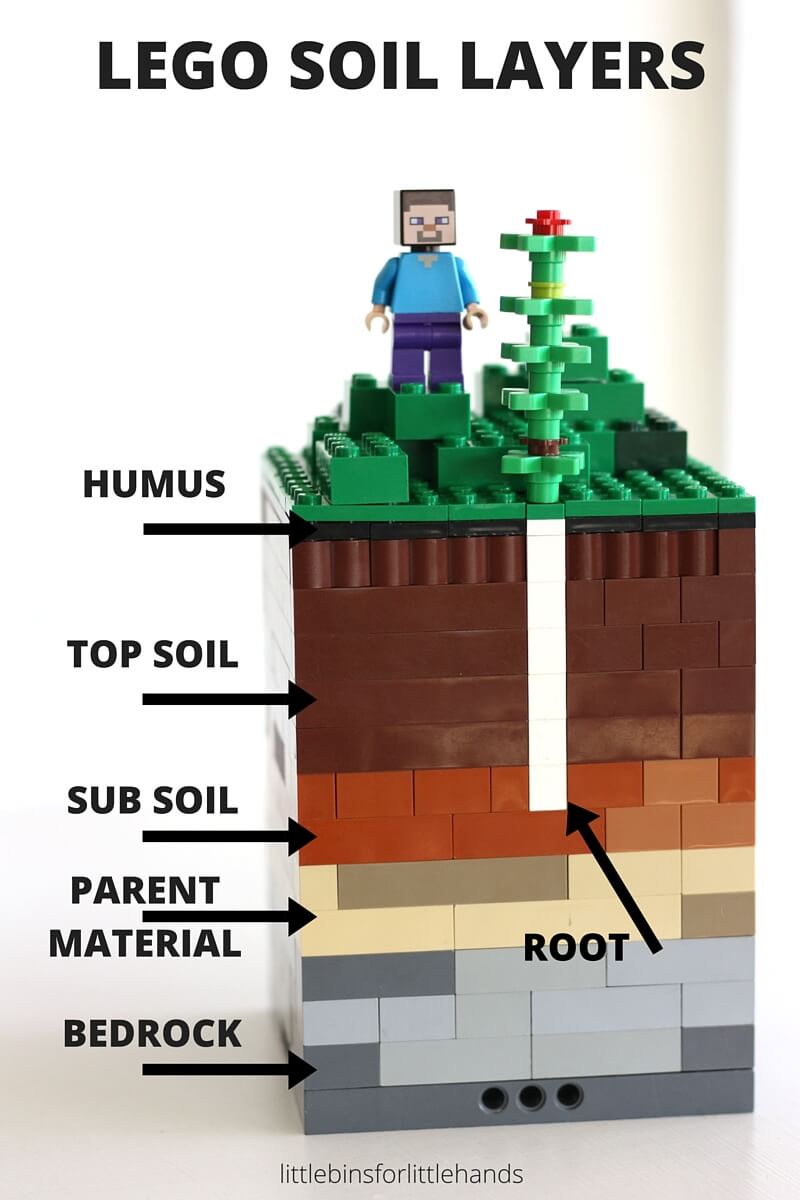
The LEGO Soil Layers experiment is a fascinating and educational activity that allows students to explore the concept of soil composition and layering.
By constructing a vertical structure using different colored LEGO bricks, students can simulate the layers of soil found in the Earth’s crust.
Learn more: Lego Soil Layers
13. LEGO Domino Chain Reaction
This experiment promotes critical thinking skills as students strategize and plan their domino setup, considering factors such as spacing, height, and design. It also encourages creativity as students can design elaborate patterns or incorporate additional elements to enhance the chain reaction.
14. Coding LEGO Maze
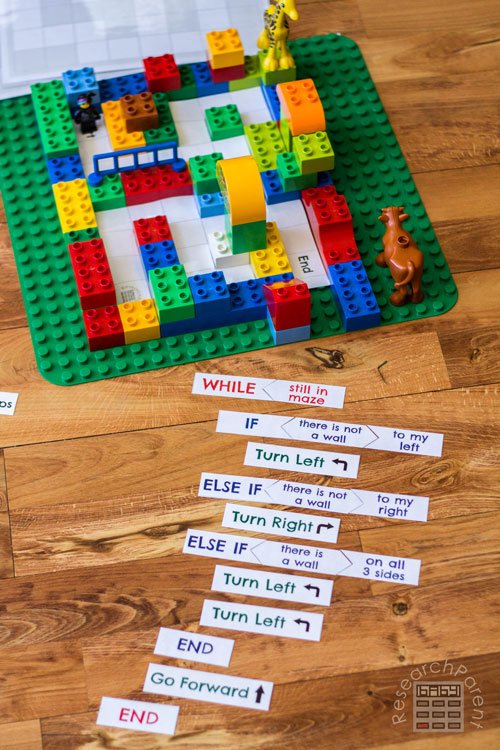
This experiment promotes persistence and resilience as students iterate and refine their maze to enhance its difficulty and playability.
It also encourages collaboration and communication as students can challenge their peers to navigate their mazes and exchange ideas for improvements.
Learn more: Coding Lego Maze
15. LEGO Sensory Bottles
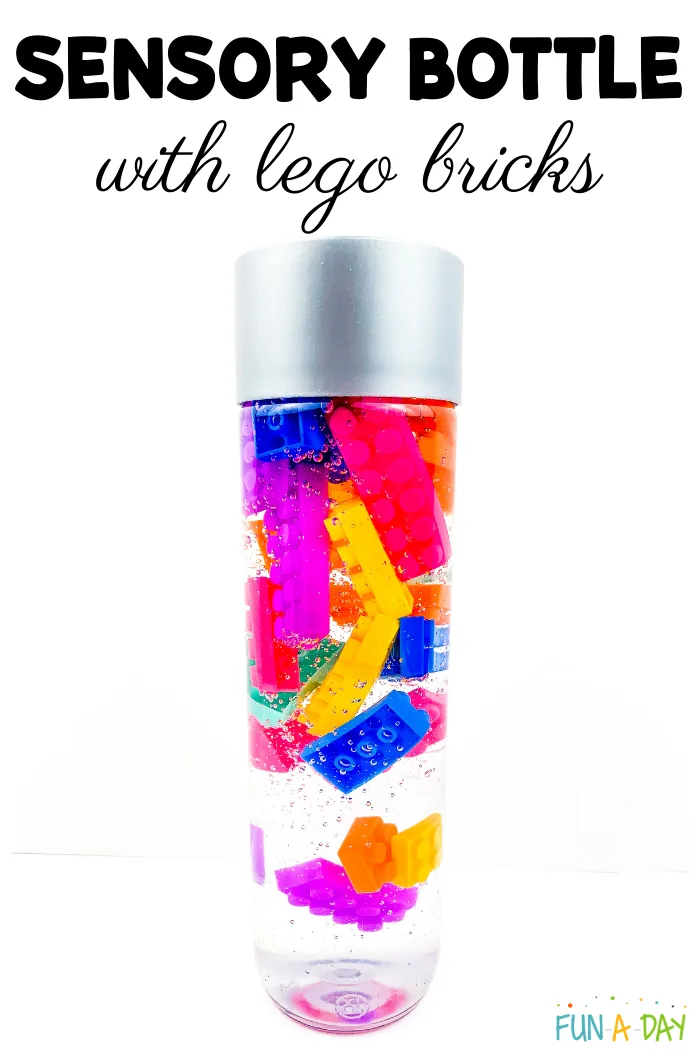
This experiment promotes sensory development as students observe the movement of the LEGO pieces through the water, feel the textures, and listen to the soothing sounds created by shaking the bottles.
Learn more: Lego Sensory Bottles
16. Write Coded Messages with LEGO Bricks
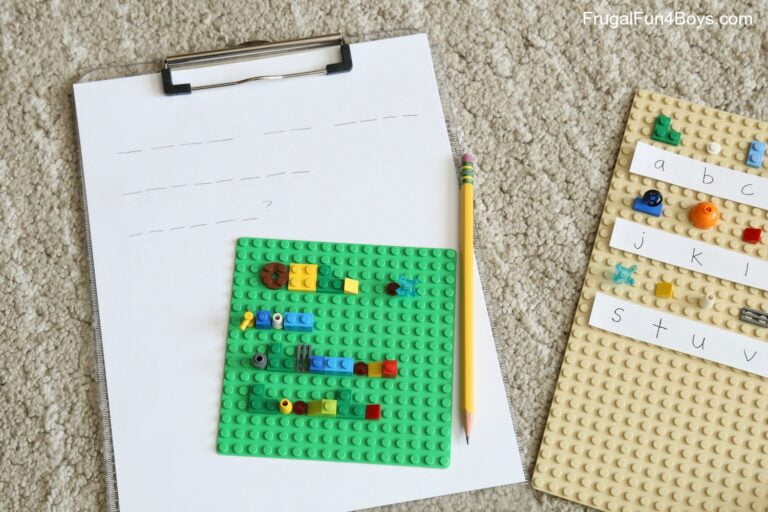
By assigning unique symbols or patterns to different LEGO bricks, students can create their own coding system and write secret messages.
Learn more: Lego Secret Codes
17. LEGO Boat
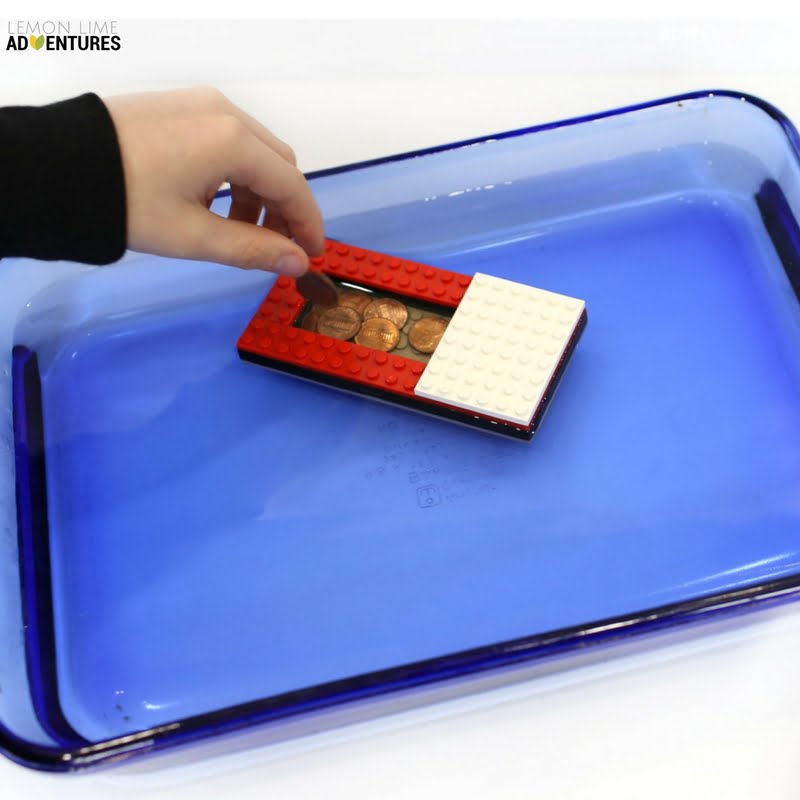
By constructing their own LEGO boat, students can explore the principles of flotation, stability, and design.
Learn more: Lego Boat
18. LEGO Windmill
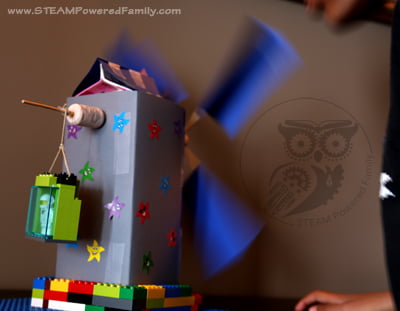
The Build a LEGO Windmill experiment is an engaging and educational activity that combines engineering, renewable energy, and creativity.
By constructing their own LEGO windmill, students can explore the principles of wind power and its conversion into mechanical energy.
Learn more: LEGO Windmill
19. LEGO Pulleys
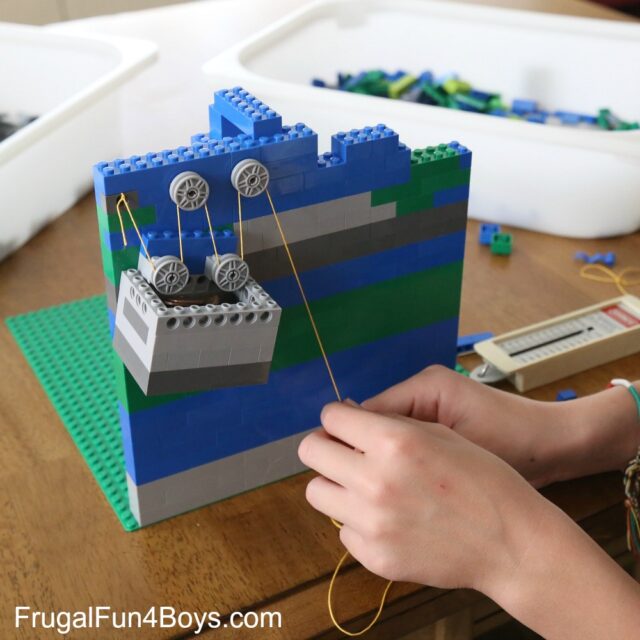
The Build a LEGO Pulley experiment is a captivating and educational activity that introduces students to the principles of mechanical advantage, force transmission, and simple machines.
By constructing their own LEGO pulley system, students can explore how pulleys can be used to lift and move objects with ease.
Learn more: LEGO Pulley
20. Build a LEGO Solar System
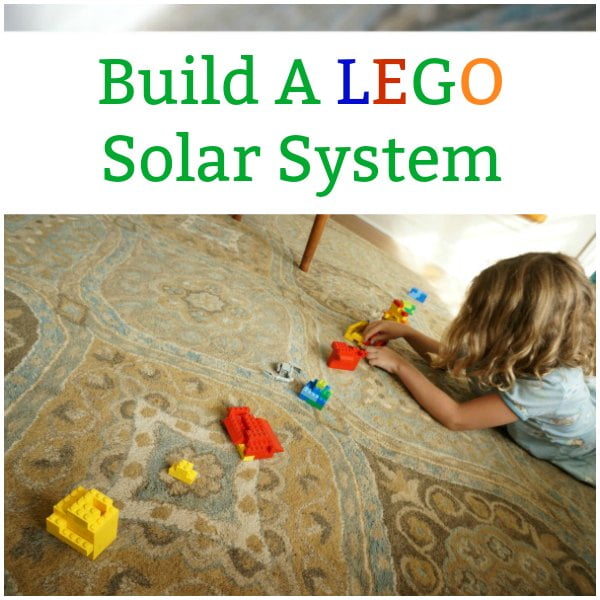
Students can experience the magnificence of space, learn about celestial bodies, and use their creativity by participating in the Build a LEGO Solar System experiment.
Learn more: Build a Lego Solar System
21. Create a LEGO Water Cycle
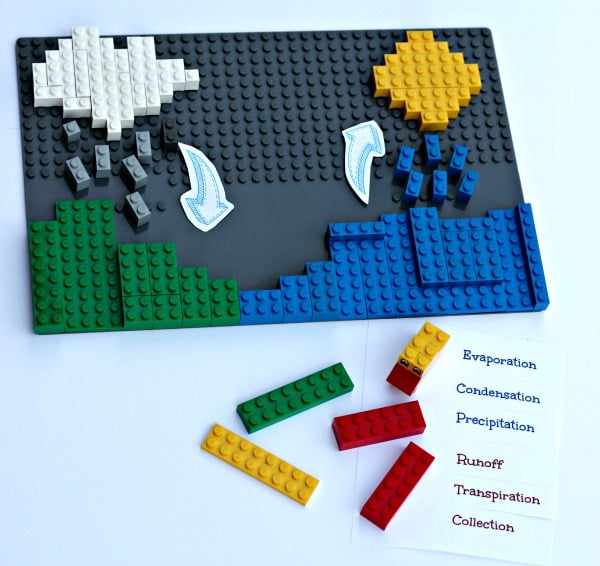
By constructing a LEGO model that represents the water cycle, students can visually understand the different stages of evaporation, condensation, and precipitation.
Learn more: Water Cycle Science Project
22. Geometry LEGO Blueprint
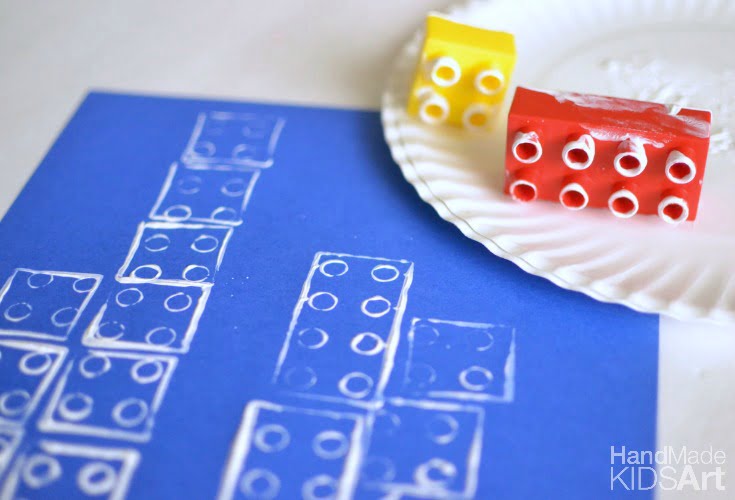
The Build a LEGO Geometry Blueprint experiment is a stimulating and educational activity that combines geometry, spatial reasoning, and creativity.
By constructing a LEGO model based on a geometric blueprint, students can explore various shapes, angles, and dimensions in a hands-on way.
Learn more: Geometry LEGO Blueprint
23. LEGO Addition Cards
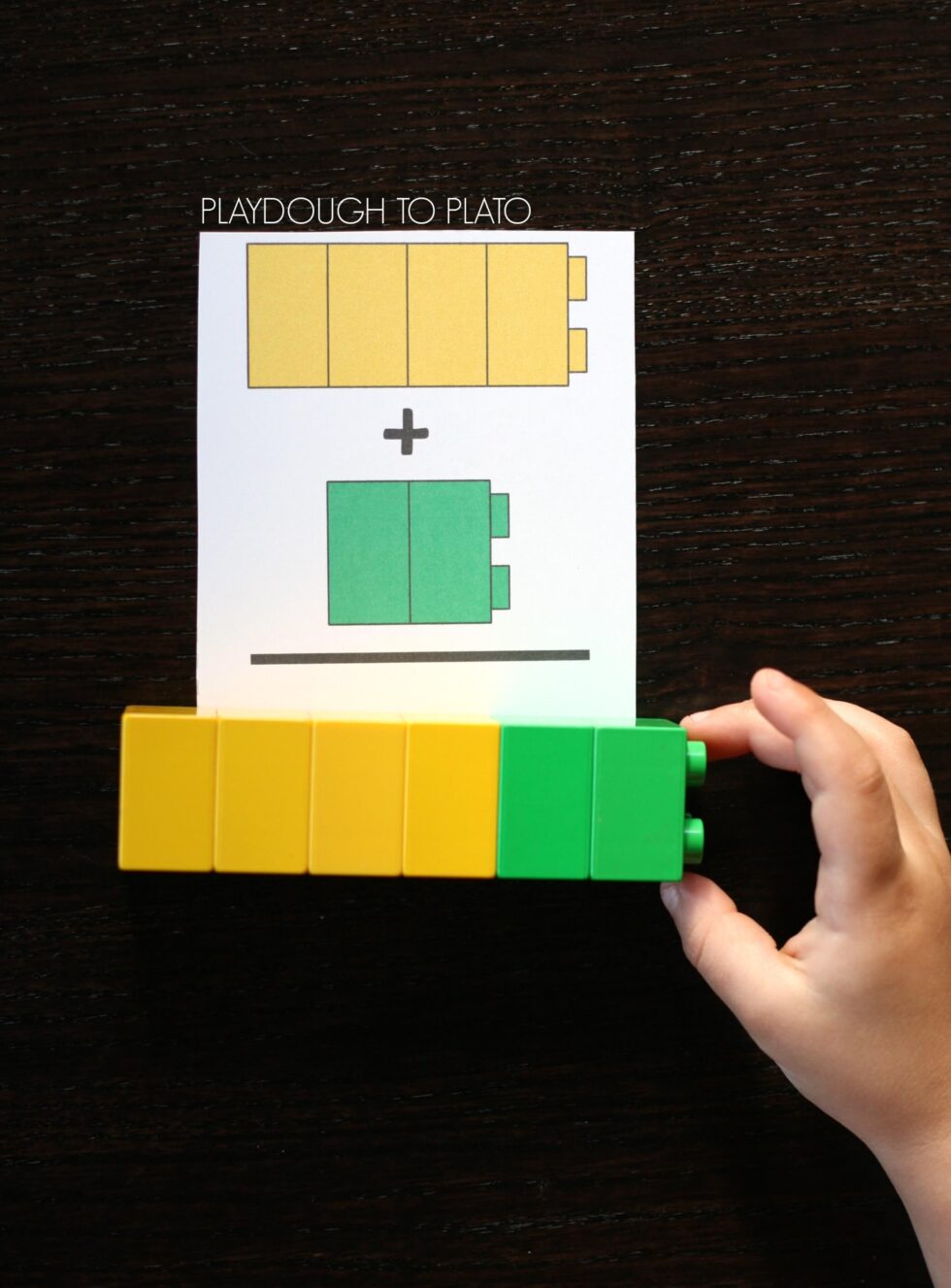
The Build a LEGO Addition Cards experiment is an engaging and educational activity that combines mathematics, hands-on learning and creativity. By constructing LEGO cards representing numbers and using them to practice addition, students can develop their arithmetic skills in a fun and interactive way.
Learn more: Lego Addition Cards
24. LEGO Insect Anatomy
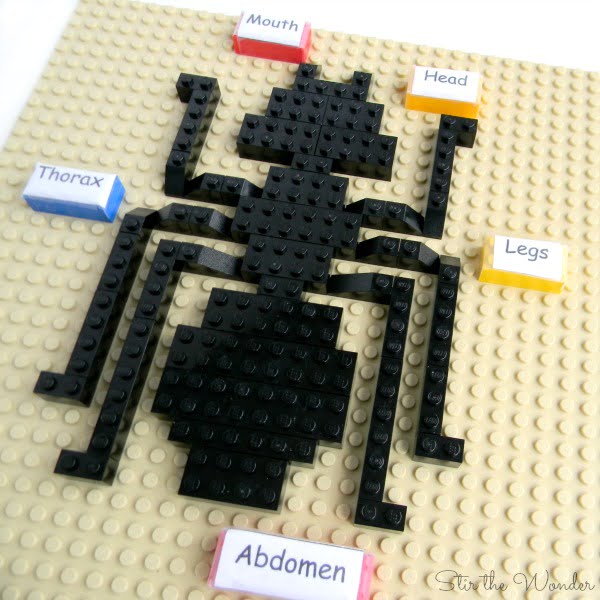
By constructing a LEGO model that represents the anatomy of an insect, students can explore the internal structures and systems of these fascinating creatures.
Learn more: LEGO Insect Anatomy
25. LEGO Airplane
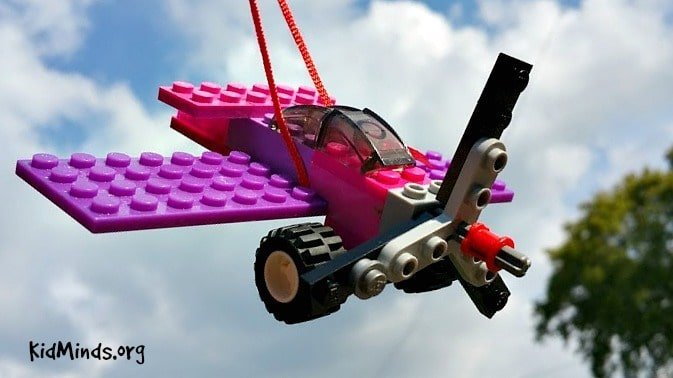
This experiment promotes critical thinking skills as students analyze and optimize their airplane’s design for optimal performance and stability.
It also encourages creativity as students can customize their airplanes with unique features and decorations.
Learn more: LEGO Airplane
26. LEGO Man Goes Skiing
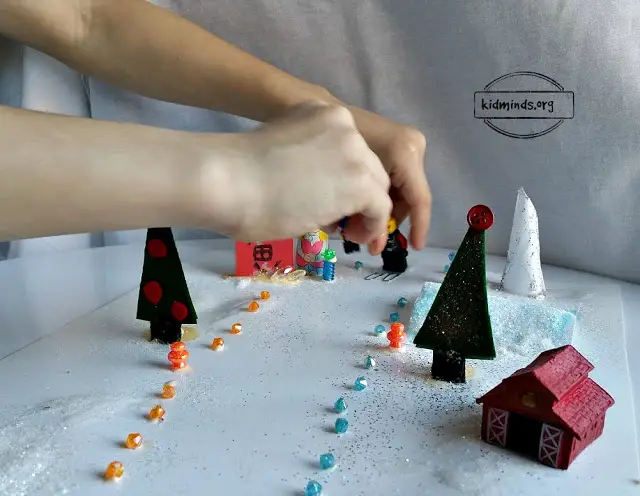
The LEGO Man Goes Skiing experiment is a fun and educational activity that combines physics, magnetism, and creativity.
Learn more: LEGO Man Goes Skiing
27. LEGO City Earthquake
By constructing a LEGO cityscape and simulating an earthquake, students can explore the impact of seismic events on structures and the importance of building earthquake-resistant designs.
28. Mix Colors of Light
The Mix Colors of Light using Flashlight and LEGO experiment is an interactive and educational activity that combines physics, light, and creativity.
By using LEGO bricks as filters and a flashlight as a light source, students can explore the principles of color mixing and the behavior of light.
29. Wind-Powered Car
By constructing a LEGO car and harnessing the power of wind to make it move, students can explore the principles of aerodynamics, energy conversion, and sustainability.
30. Friction with LEGO
By constructing a LEGO car and experimenting with different surfaces and materials to reduce friction, students can explore the impact of friction on motion and learn how to optimize their car’s performance.
31. Build A LEGO Water Wheel
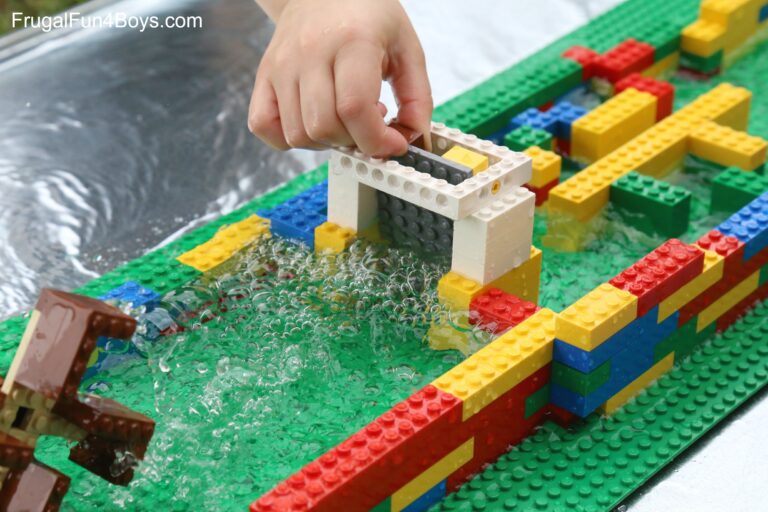
This experiment promotes problem-solving skills as students design and optimize their water wheel to efficiently capture and utilize the energy of moving water. It also encourages creativity as students can customize their water wheels with unique designs and configurations.
Learn more: Build A LEGO Water Wheel
32. Solar Powered LEGO Car
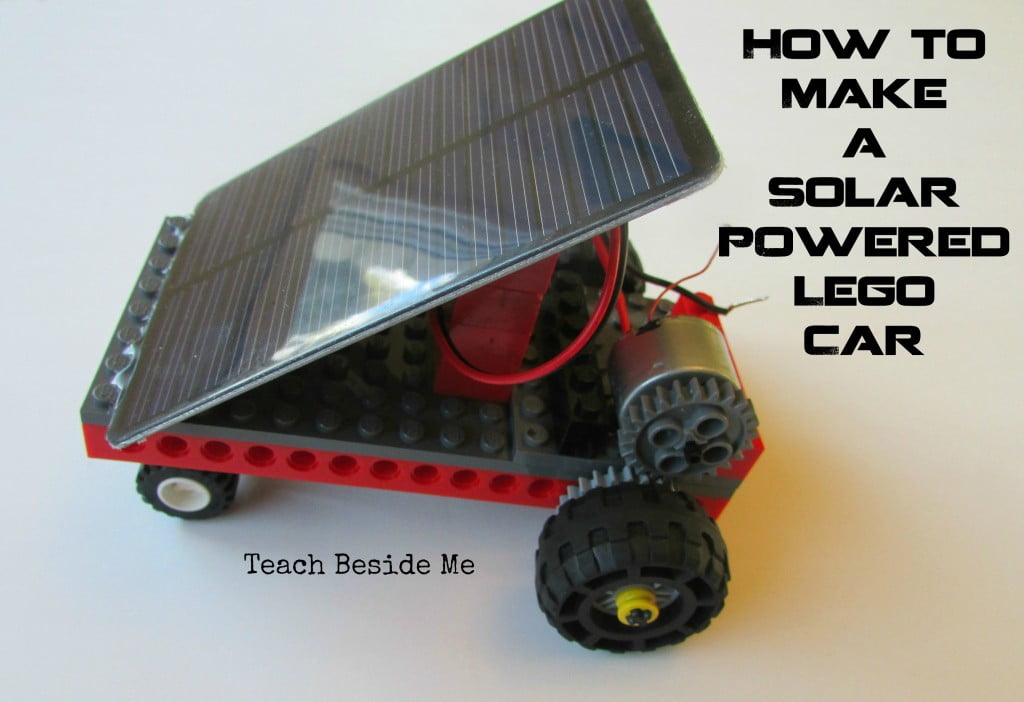
The Solar Powered LEGO Car experiment is an exciting and educational activity that combines renewable energy, engineering, and creativity.
By constructing a LEGO car and powering it with solar energy, students can explore the principles of solar power and its application in transportation.
Learn more: Solar Powered LEGO Car
33. Create a Big Vortex with LEGO Motors
By constructing a LEGO contraption with motors that generate a powerful vortex, students can explore the behavior of fluids and the principles of rotational motion.
They learn about the concept of a vortex, how it forms, and the factors that influence its size and strength.
34. Air Powered LEGO Truck
The Air-Powered LEGO Truck experiment is an exhilarating and educational activity that introduces students to the principles of pneumatics and engineering.
By constructing their own LEGO. This experiment promotes critical thinking skills as students analyze and optimize their airplane’s design for optimal performance and stability. It also encourages creativity as students can customize their airplanes with unique features and decorations truck powered by compressed air, students can explore concepts such as air pressure, force, and motion in a hands-on and interactive way.
35. LEGO Mini Pendulum Clock
By engaging in the LEGO Mini Pendulum Clock experiment, students not only gain a practical understanding of timekeeping mechanisms but also improve their fine motor skills, attention to detail, and patience. Also, constructing their own LEGO mini pendulum clock, students can explore concepts such as oscillation, period, and precision.
36. Making a LEGO Domino Machine
By engaging in the Making a LEGO Domino Machine experiment, students improve their fine motor skills, enhance their understanding of mechanical systems, and foster a sense of innovation and ingenuity.
37. Making and Infinite LEGO Domino Ring
By constructing a continuous loop of interconnected LEGO dominoes, students can explore the concept of an infinite chain reaction.
38. LEGO Propeller
By constructing a LEGO propeller-powered vehicle and testing its ability to move different weights, students can explore the principles of thrust, aerodynamics, and weight distribution.
39. LEGO Powered Submarine
This experiment promotes problem-solving skills as students experiment with different configurations and adjust their design to achieve optimal underwater performance.
40. Building a Wind-Powered LEGO Train
The Wind-Powered LEGO Train experiment is an exciting and educational activity that combines engineering, renewable energy, and problem-solving.
By constructing a LEGO train and harnessing the power of wind to make it move, students can explore the principles of aerodynamics, energy conversion, and sustainable transportation.

